

Vampire

The De Havilland Vampire was the first single engine British jet fighter to enter production. The original specification called for a single seat, single engine aircraft with a top speed of 500 mph, service ceiling of 48,000 feet and an armament of four 20mm cannon. The design was an example of creating the smallest airframe to fit the engine available. The plane used a lot of wood in the assembly due to De Havilland's experience with it from the Mosquito. The prototype first flew in September of 1943, and the production was to begin in May of 1944. The first production version, the Mk I first flew in April of 1945. Although too late to see service in World War II, it proved successful enough to warrant development of night fighter and training versions. As a testament to its success the Vampire was used by the air arms of 28 countrys with the last being retired in 1990
The Kit
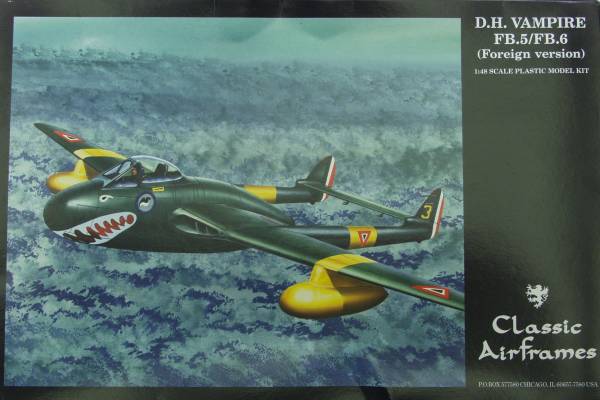
The Classic Airframes kit comes in a thin two part top
opening box with mediocre artwork on the top.
Inside the box there was one large bag with a separate compartment for
the clear parts and one small bag. All of the plastic parts were in one
bag, and the small bag within cnatained the resin parts. This is a
limited run kit which
means they use tooling that is not hardened and no alignment pins. This seems
to put some folks off but I find that in many cases the alignment pins
cause more trouble than they are worth. The plastic parts are molded in
a gray color and most had some small amount of flash. The panel lines
are recessed, consistent and pretty much standard for the scale. The
finish is glossy and smooth with only a couple minor surface
irregularities found. The only issue I had with the surface detail was
the recessed lines outlining the control surfaces seemed to be a little
light and could stand to be a bit deeper but that is not hard to fix.
The control surfaces are all fixed. Ejector pin marks were almost non
existent at least on parts that would be visible. The ones on the
internal wing surfaces will need to be removed to insure proper wing
fit. The small parts all had a fair amount of parting line to deal with
and Items like the gear struts are not perfectly round but that is not
all that uncommon on limited run kits. Another issue is the sprue
attachment points which are heavy and care needs to be taken when
removing parts from sprues. A razor saw is recommended over sprue
cutters. Altogether there are 41 gray plastic parts. See photos below
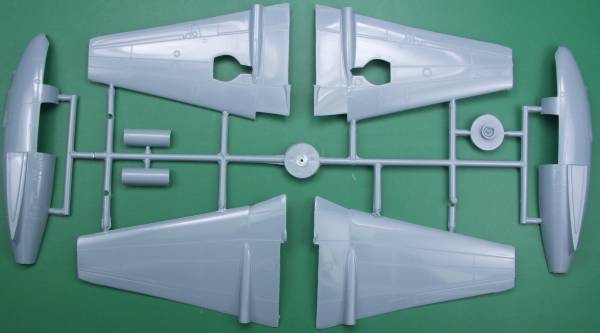
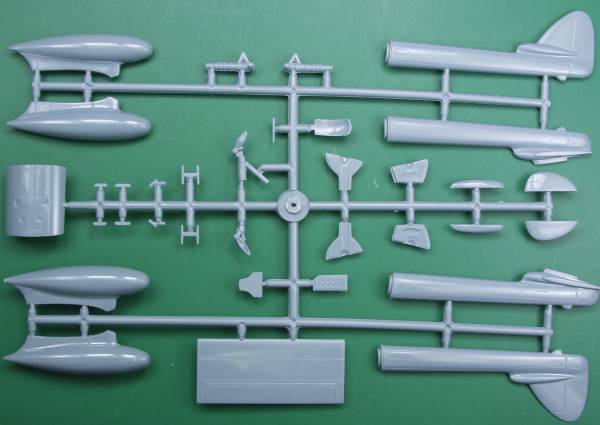
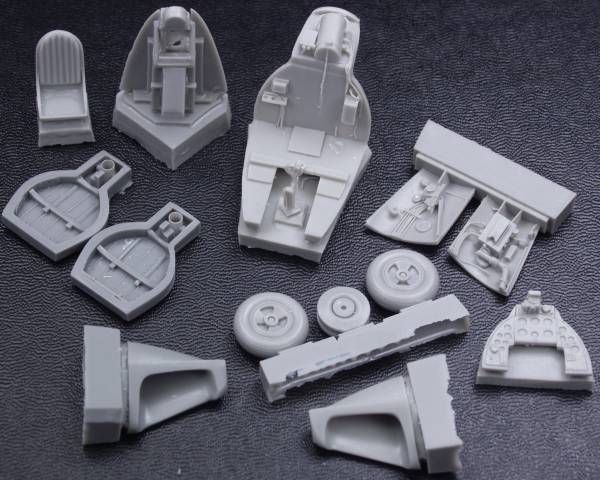
The clear parts are thin and clear with raised frame detail. The canopy is molded in two parts so it can be displayed in the open position. There are a total of 2 clear parts.
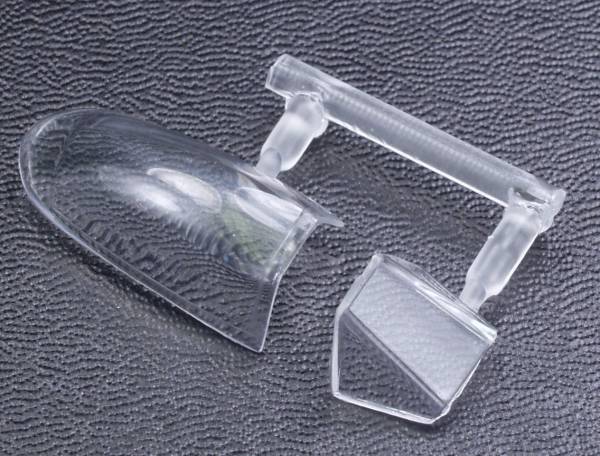
The kit contained two decal sheets with markings for three aircraft, one FB.5 RAF, one FB.5 RCAF and one FB.9 RNZAF, Both sheets were printed by Microscale so they should be of good quality. The basic sheet includes quite a few stencils and walk way markings. Both sheets were in good register. See below.
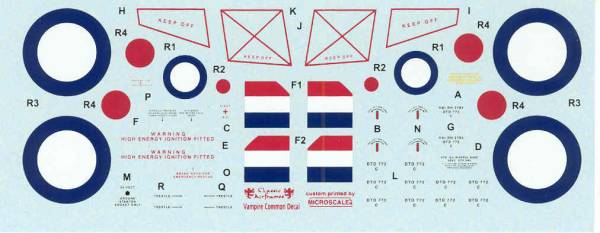
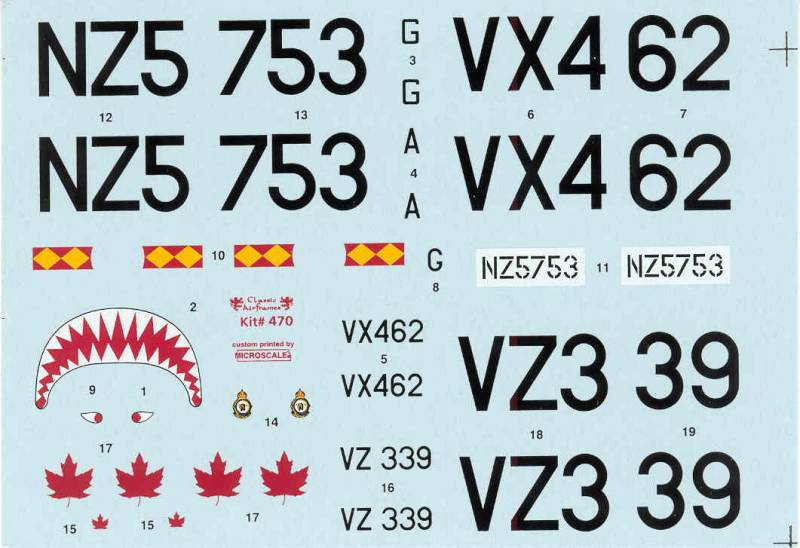
The instructions consist of a legal sized page printed on both sides and folded in half creating four pages. the first has history and specifications as well as a notice that the kit is intended for experienced modelers. The second page has a part map and the last two have the assembly sequence. One additional sheet, letter size, printed on both sides has marking information for the three versions and astencil guide.
At this time the only after market I am aware of is Decals from Xtradecal.
Conclusions
The only other injection kit for this aircraft that I
am aware of is a Hobbycraft kit and it has some shape and size issues.
This kit is better proportioned and with the usual care required for
assembling limited run multimedia kits should build into a nice example
of this early British jet. If you follow the links to reviews below you
will read that even though the kit is better than the Hobbycraft kit it
still has some issues for those that are high accuracy. To my eye it's
close enough. Recommended for modelers with experience with limited run
kits.
Links to kit build or reviews
Reviews and builds can be found here here and here
References
I had a difficult time finding reference material on the Vampire and as a result ended up getting most of the historical information online.
Updated 3/1/09